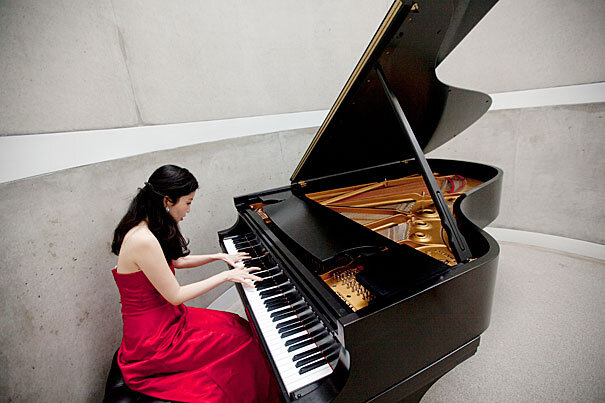 Chia-Jung Tsay at the piano
Chia-Jung Tsay at the piano
"Social judgments are made on the basis of both visual and auditory information, with consequential implications for our decisions." Thus begins the abstract for"Sight over sound in the judgment of music performance" by Chia-Jung Tsay, published last month in the journal Proceedings of the National Academy of Sciences of the United States Of America. Maybe you heard Shankar Vedantam's NPR story about Tsay's findings on Morning Edition this week.
I am fascinated by this research, because Tsay came to it in a very personal way. A child piano prodigy, she spent years on the piano competition circuit. She is a graduate of The Julliard School and Peabody Conservatory, and holds not one but two Harvard Ph.D.s--in Organizational Behavior and Psychology and in Music. Somewhere along the way she noticed that her competition scores were better when the judges saw her play, rather than when they just heard her. Something about the experience of watching her was influencing their judgement.
I am sure the musician was delighted with those good scores, but the psychologist in her thought this was something worth looking into. So she designed a study in which volunteer judges, amateur and professional musicians, compared competition performances in a variety of formats: silent videos, videos with sound, and audio-only recordings.
"What was surprising was that even though most people will say sound matters the most, it turned out that it was only in the silent videos, the videos without any sound, that participants were able to identify the actual winners," Tsay says. Which raises an interesting question: if this visual component matters this much in musical competition--where the overwhelming focus is on sound--how much more does it matter in other situations?
For those who might say that this is just an example of the "attractiveness bias," Tsay looked at the data to make sure these judgements weren't just about good looks. She says, "I wouldn't necessarily say that this is indicative of superficial judgment... There is something about visual information that is better able to convey cues such as passion or involvement or creativity. These elements are very much a part of high-quality performance."
Passion or involvement or creativity. Also a huge part of presence. I spend a lot of time working with clients on defining and projecting their presence. Many bandy that word about, but don't really know what it means. Confidence, yes, but also active engagement with your audience, as well as your content--whether it is a Beethoven sonata, a stump speech or talking points for the staff meeting. You need to be energized by what you do, even as you are doing it, and connect to it deeply. Tsay's study shows that the winners are those who clearly communicate that energy and connection.
And even though we do not yet competitively score keynote speeches or networking events, remember Tsay's conclusion the next time you want to turn in your best performance.

